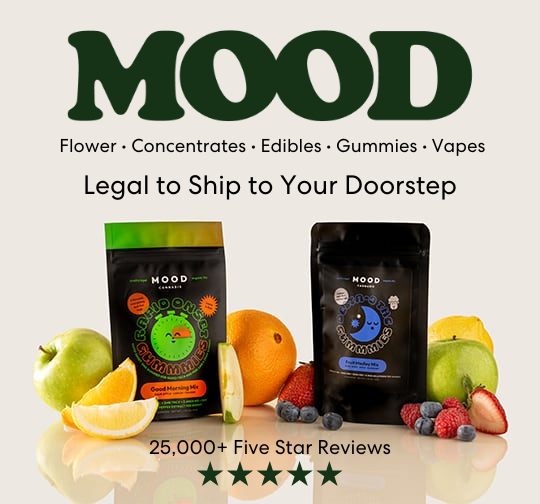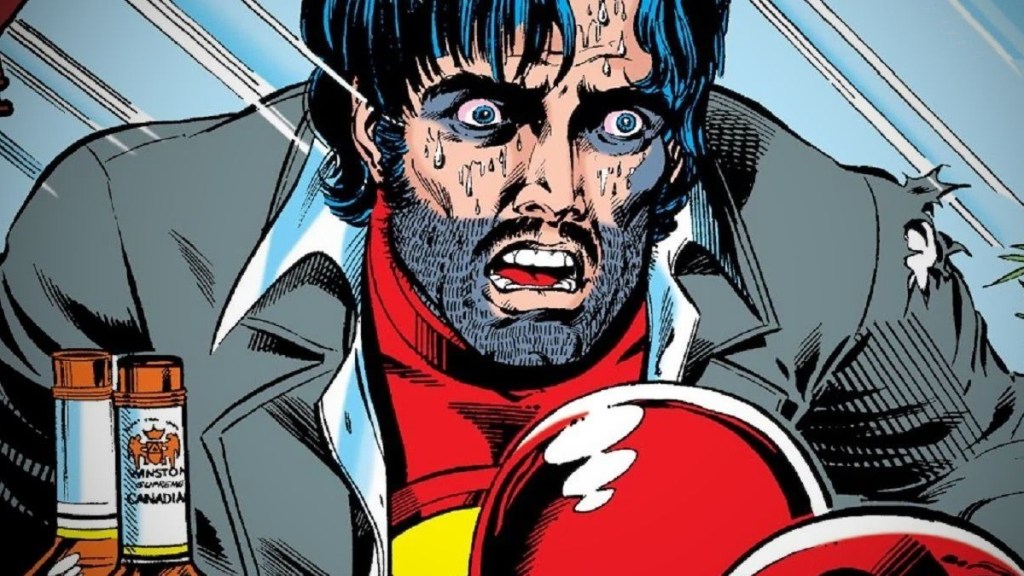Brought to you by:

There are a number of comic books and graphic novels dealing with the subject of drugs. Most of them are preachy public service announcements that are light in tone and short on substance. However, there are some stories that are notable for how they addressed the subject and how they changed the characters involved forever. Some of them also managed to change the world of comics.
Green Goblin Reborn! (Amazing Spider-Man #96-98)
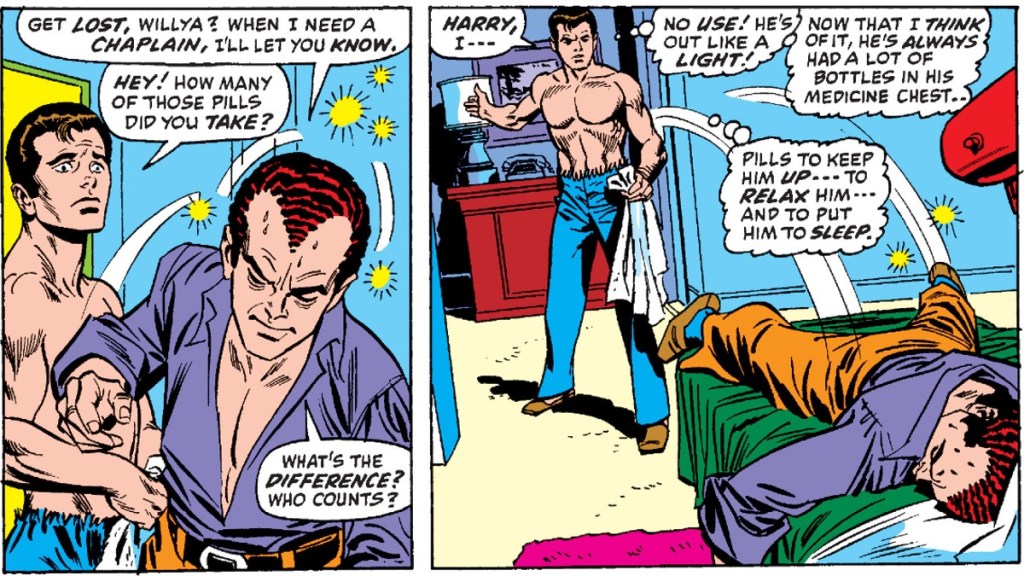
Originally, the Comics Code Authority prohibited any depiction of drug abuse, even if the intent was to show its dangers. Stan Lee disagreed with this but didn’t seek to challenge it until he was asked to write an anti-drug story by the U. S. Department of Health, Education, and Welfare in 1971. Lee wove a subplot about Harry Osborn turning to drugs into the next Amazing Spider-Man storyline. The three-part story (which ran without the CCA seal of approval) found Peter Parker coping with his best friend’s drug abuse and Norman Osborn’s Green Goblin persona reemerging.
While far from subtle, “Green Goblin Reborn!” did everything Lee hoped it would accomplish. It earned Marvel Comics high praise for showing drug abuse was a problem for young people from all walks of life – not just the poor and minorities. It also embarrassed the Comics Code Authority into revising their standards, as the public questioned why they refused to endorse such an important story.
Snowbirds Don’t Fly (Green Lantern/Green Arrow #85-86)
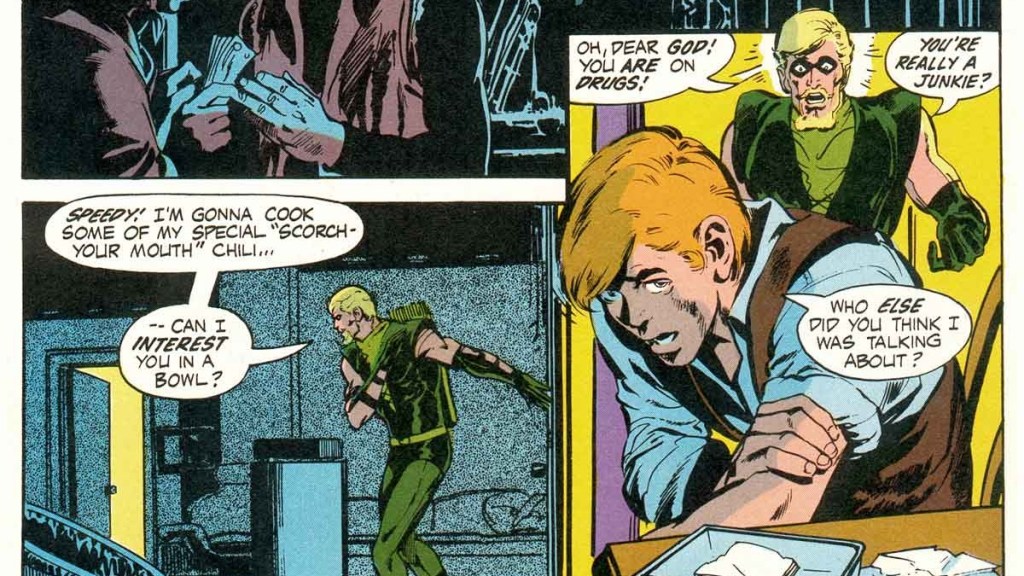
A few months after “Green Goblin Reborn!”, DC Comics released their own anti-drug storyline. This time, however, the ante was raised, and an actual superhero fought an addiction to drugs instead of their friend. In this case, the hero was Speedy from the Teen Titans.
While Snowbirds Don’t Fly was less than realistic in how quickly Roy Harper recovered from heroin addiction, it did earn praise for showing the effects of drug abuse. It also permanently changed Roy’s character, driving a wedge between him and Green Arrow, who kicked Roy out of his house. The story won that year’s Shazam Award for Best Individual Story.
Green Arrow: Year One (Green Arrow: Year One #1-6)
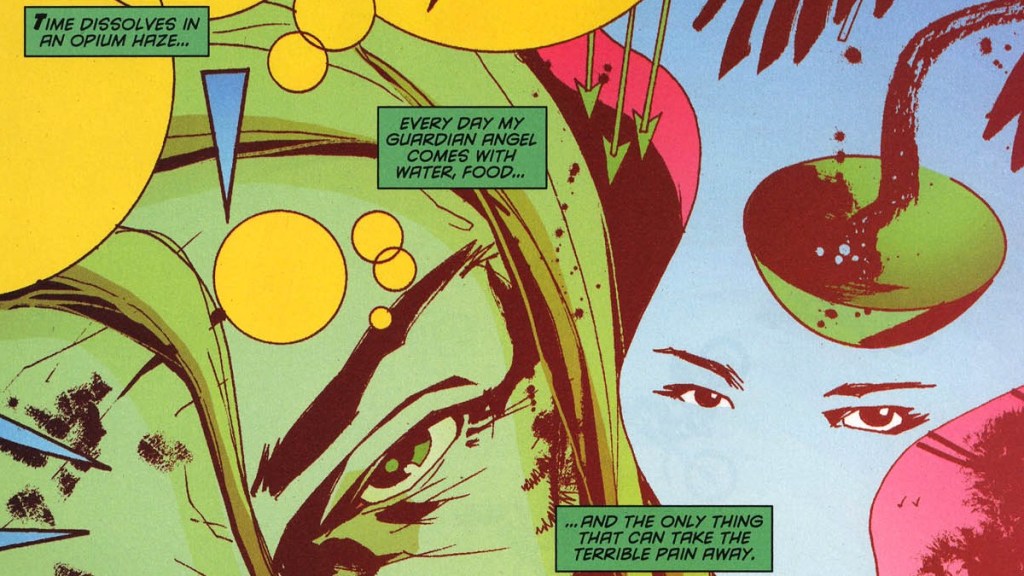
Green Arrow: Year One added context as to why Oliver Queen overreacted to Roy Harper turning to drugs. The 2007 story revamped Green Arrow’s origins, directly making him into a Robin Hood figure. It accomplished this by pitting Oliver Queen against a drug cartel, which enslaved the natives of the island where he was shipwrecked. Wounded in the fight, Oliver was given opium to dull the pain of his wounds. The resulting trip left Green Arrow with a severe aversion to opiates, wondering how anyone could willingly abuse them. The graphic novel also inspired the general tone of the Arrow television series.
Iron Man: Demon in a Bottle (Invincible Iron Man #120-128)
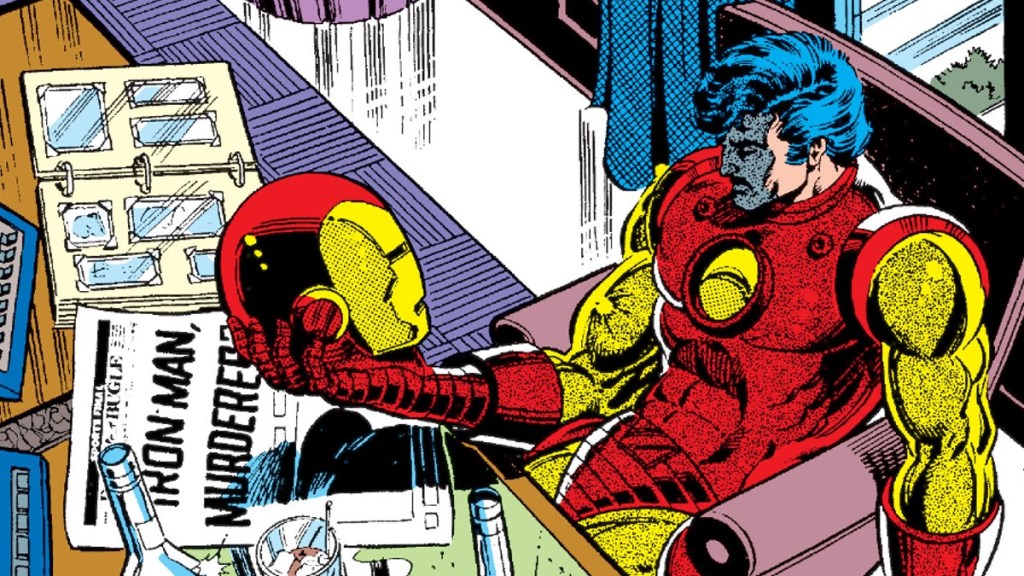
Demon in a Bottle is perhaps the most famous Iron Man story of all time. The nine-part comic pit Tony Stark against his own addictive personality, as the stress of his double life drove him to drink. Ironically, the creators did not intend to tell a cautionary tale about the dangers of alcohol abuse. They just considered what normally brought about the fall of corporate giants in the real world: sex and drugs. Since sex was out of the question, they told an Iron man story where “alcoholism was the bad guy.”
Batman: Venom (Batman: Legends of the Dark Knight #16-20)
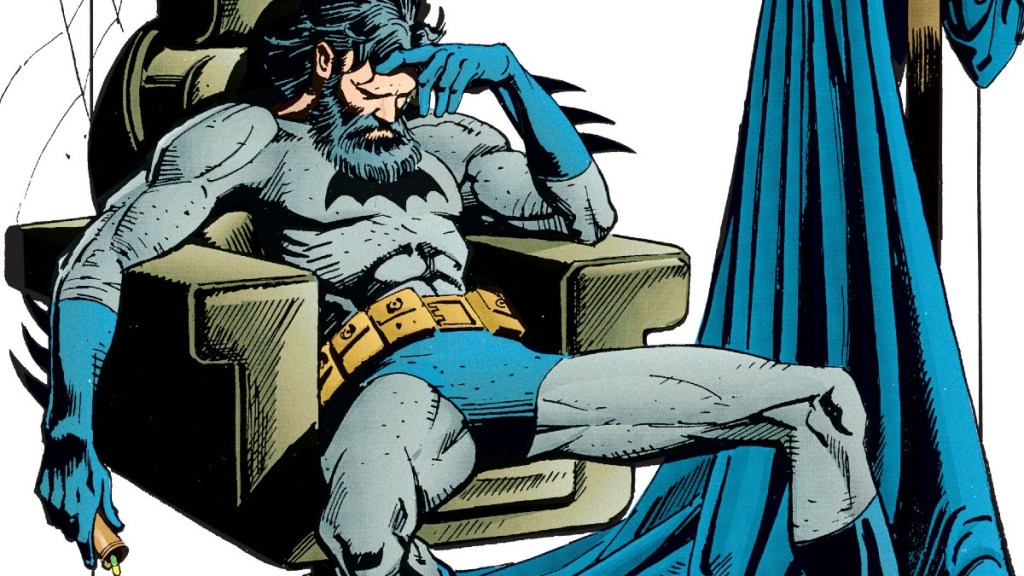
It is hard to imagine a superhero more straight-edge than Batman. Yet the Dark Knight faced his own battle with drugs in this five-part storyline. After failing to save a young girl, Bruce Wayne turns to an experimental steroid to make himself a better hero. What follows is a battle for the Dark Knight’s soul, as Batman unwittingly becomes the test subject of a ruthless scientist and a general with dreams of a super soldier army.
Moon Knight: The Bottom (Moon Knight Vol. 5 #1-6)
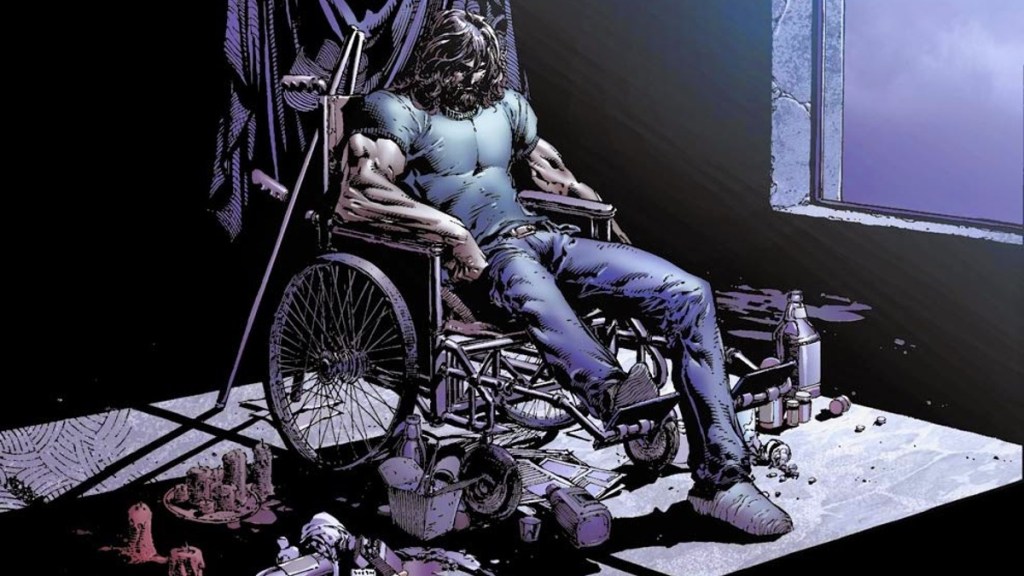
Marc Spector was never the most stable of superheroes. Even in his earliest adventures, there was some question as to whether the moon god Khonshu was real or if Marc was just imagining him. Those questions were explored as never before in “The Bottom”, which found a broken and beaten Moon Knight battling an addiction to painkillers as he rebuilds himself.
The Golden Age (The Golden Age #1-4)
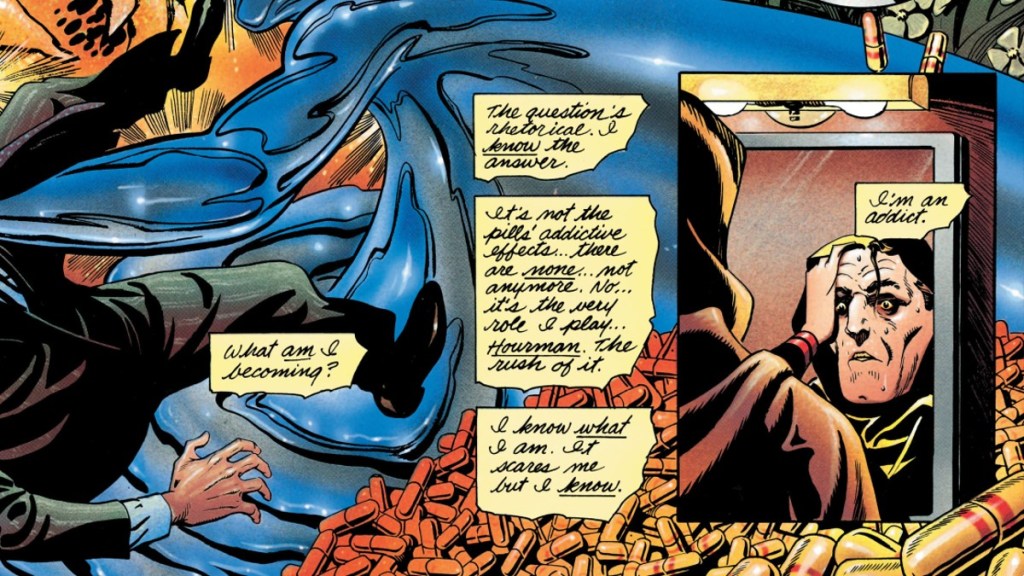
Published in 1993, The Golden Age examined the lives of DC Comics’ first wave of superheroes after World War II. The mini-series offered several dark takes on the classic heroes, but the storyline centered around Hourman may have been the darkest of all. Chemist Rex Tyler, who gave himself superhuman abilities for one hour at a time through his wonder-pill Miraclo, began to exhibit symptoms of becoming addicted to more than the joy of helping his fellow man.
Captain America: Streets of Poison (Captain America #372-378)

It is hard to imagine Captain America battling an addiction to drugs. However, this is what happened in Streets of Poison. The six-part storyline found Steve Rogers changed after being caught in an exploding drug lab. Somehow, the designer drug called Ice interacts with the Super Soldier Serum in Cap’s body, causing him to lose control of his temper. This leaves allies like Black Widow, Diamondback, and Daredevil struggling to contain the Sentinel of Liberty, as he throws himself into the middle of a turf war between the Kingpin and the Red Skull. As goofy as this was, the actual fight scenes are fantastic, particularly the duel between Kingpin and Red Skull.
Riot at Xavier’s (New X-Men #135-138)
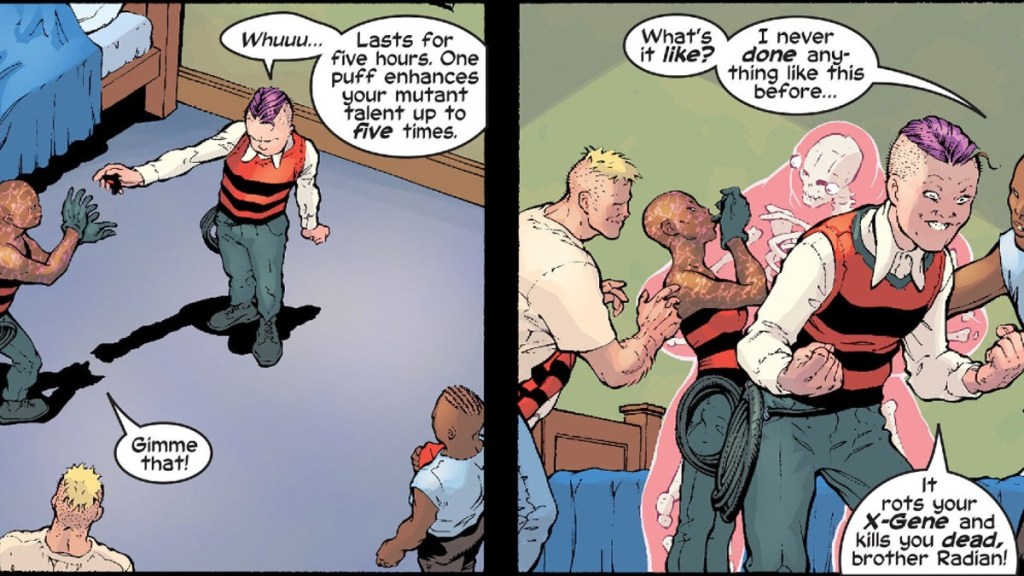
Grant Morrison explored a number of ideas during their run on New X-Men, in regards to how Mutants might develop into a unique counter-culture in the Marvel Universe. No story explored this idea quite so deeply as Riot at Xavier’s. The plot centered around a group of mutant teens, led by the rebellious Quentin Quire. They augmented their powers with a street drug called Kick, before starting a riot during an Open House at the Xavier Institute.
Arkham Asylum: A Serious House on Serious Earth
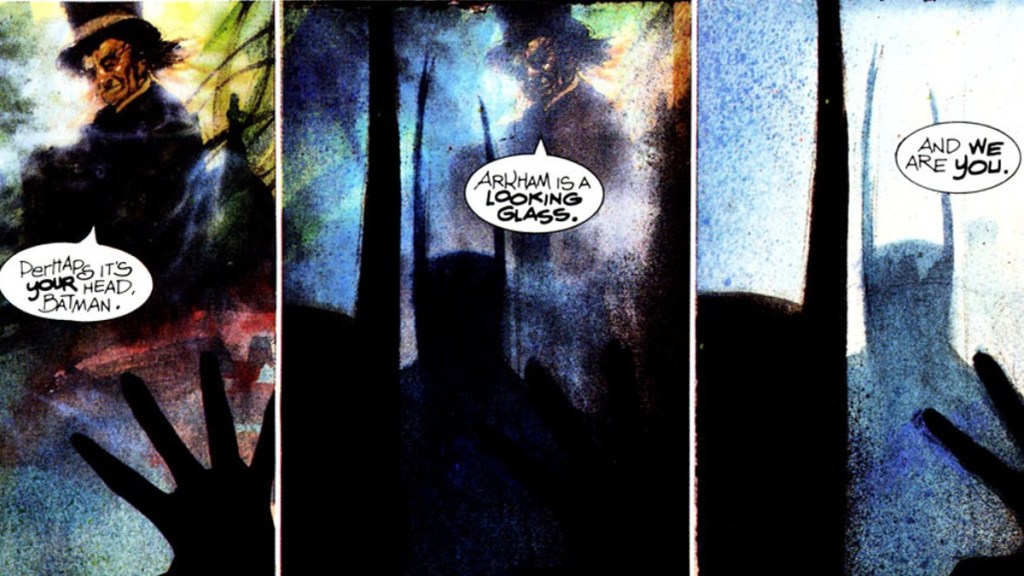
While not explicitly concerned with drugs, Arkham Asylum: A Serious House on Serious Earth is designed to feel somewhat psychedelic. This is most apparent in the sequence with the Mad Hatter, who is shown smoking a water pipe. The graphic novel features some of Dave McKean‘s greatest imagery and is a must-read for all Batman fans.
Find these graphic novels and comics at your local comic book store.
With over 25,000+ 5 star reviews and operating in 34 states – Mood makes the unwind for your next comic book binge completely legal and delivered to your doorstep. Flower, concentrates, edibles, gummies, vapes and more; better than local dispensaries. Lab tested for the highest quality, with a 100-day moneyback guarantee. Buy legal THCa here.
